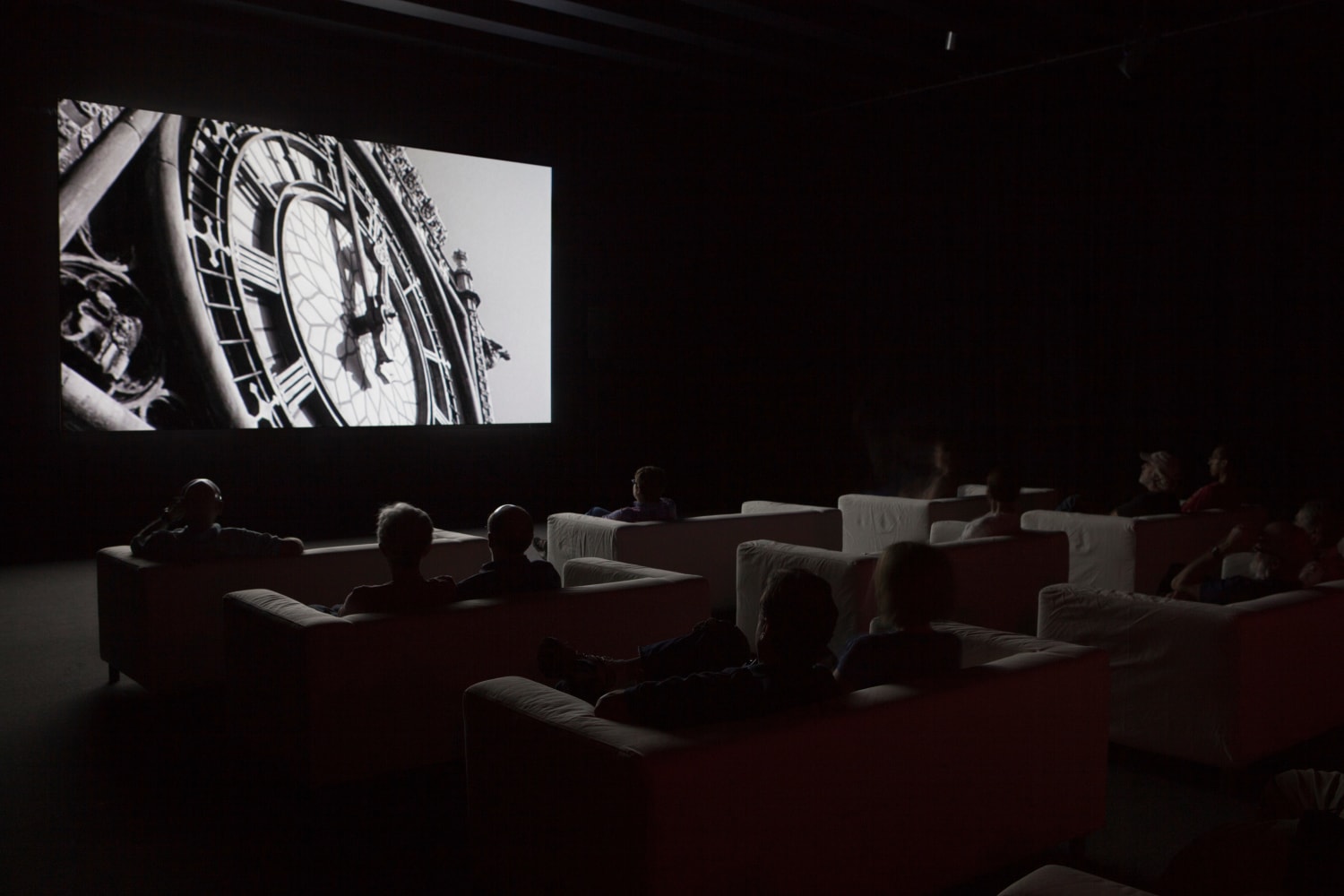
Photo by Gene Pittman, Courtesy Walker Art Center and Paula Cooper Gallery.
Encapsulating 100 years of moving-image history, Christian Marclay’s The Clock (2010) is a 24-hour montage composed from thousands of film and television clips depicting clocks and other references to time. James Bond checks his watch at 12:20 a.m.; Meryl Streep turns off an alarm clock at 6:30 a.m.; a pocket watch ticks at 11:53 a.m. as the Titanic departs. With each clip synchronized to the local time, The Clock collapses the fictional time presented on screen with the actual time of each passing minute. The work is both a cinematic tour-de-force and a functioning timepiece.
Building on his background as a musician in Boston and New York’s underground scenes of the late 1970s and 1980s, Marclay has for five decades combined visual and sonic fragments to explore the complex relationships between image and sound. His resulting works have taken form across a wide range of mediums: sculpture, painting, photography, print, performance, and video. With the help of assistants searching for footage, Marclay spent three years meticulously editing The Clock—the culmination of his innovative approach to looking at the world anew through found material.
The Clock speaks to cinema’s rich history as both a mirror of and escape from reality, a paradox that is ever more central to daily life in today’s era of instant broadcast, streaming services, and artificial intelligence. Marclay’s assemblage of carefully selected clips takes us on a journey through the past in order to heighten our awareness of an ever-elusive and unfolding present. By editing together fragments from cinema’s vast archive to tell the current time, Marclay reframes our collective memory of movies as an uncanny confrontation with ourselves.
Organized by Stuart Comer, The Lonti Ebers Chief Curator of Media and Performance, and Erica Papernik-Shimizu, Associate Curator, Department of Media and Performance, with Abby Hermosilla, Curatorial Assistant, Department of Curatorial Affairs.